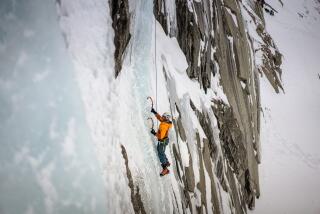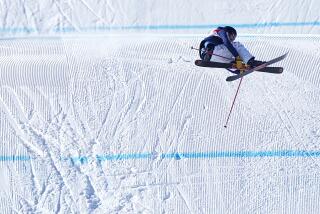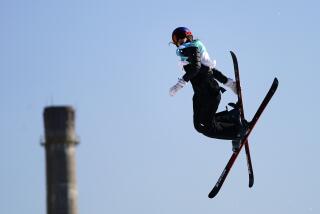When it’s snowing, who needs a hill?
- Share via
Begin with Nordic, the basic step of this winter waltz. Then branch out in the dance of your choice: Go for skate-skiing, if you like Lycra, or telemark or randonnee.
One reason for the popularity of cross-country skiing may be how little skill and equipment it requires. Beginners can start out with the classic Nordic cross-country skiing style and learn the rudiments of glide and weight shifting, snowplowing, poling and negotiating upgrades and downhills very quickly. Before long, you are powder walking with that distinctive diagonal Nordic stride.
From here you can tackle a number of other styles. Skate-skiing is more difficult, but the reward is speed. This increasingly popular style angles the ski edges inward on the snow, as in ice skating. Skate-skiers, with their fancy Lycra suits, finger-thin skis and razor edges, are the rabbits of Nordic skiing, whizzing by traditional skiers on the trail.
Telemark skiing requires a lot of practice but allows you to ski on non-groomed trails, go downhill and turn more efficiently. With their wide skis and preference for places where no man has gone before, tele-skiers are hard-core endurance freaks. They make turns by scissoring their legs and crouching into deep knee bends. Tele-skiers carve turns with both skis, gliding low and popping up between turns. They are inclined to break their own trails and shun the groomed routes offered at most resorts.
Another variation on the theme is randonnee, favored by climbers and mountaineers. It uses a climbing-style boot that hinges from the toe but can be locked in at the heel for downhill as well. The skis are short and wider than regular cross-county skis. These guys go pretty much wherever they want.


